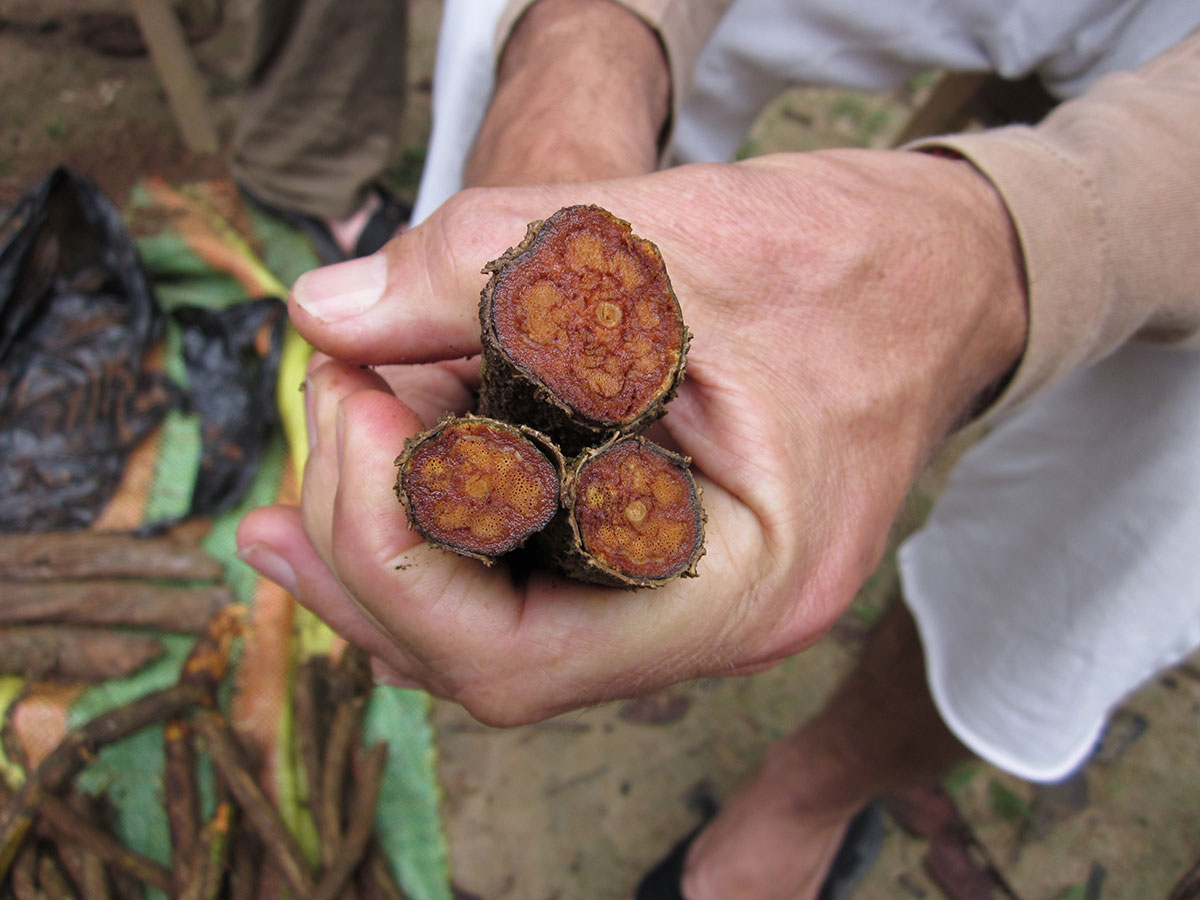The Amazonian hallucinogenic brew made from the Banisteriopsis caapi vine is most commonly known as ayahuasca, which in Quechua means “vine of the soul.” However, if you take a trip to parts of the Colombian Amazon, the word “ayahuasca” will mean little to many of the region’s indigenous communities who have been ritualistically brewing the tea for hundreds if not thousands of years.
The practice of drinking ayahuasca is present in approximately 100 indigenous groups across Colombia, Ecuador, Peru, Bolivia, Brazil, and Venezuela. The tea goes by many names, including “ayahuasca” in Peru, “yagé” in Colombia and Ecuador, and “caapi” in Brazil, amongst many others. The dozens of words for the ayahuasca brew shine a light on the diverse range of cultures that have their own traditions around using this psychoactive medicine.
In this article, we’ll look specifically at the differences between ayahuasca and yagé, including the varying processes and spiritual distinctions between each plant brew.
Same (or Similar) Plants, Different Brew?
Both ayahuasca and yagé are made from the Banisteriopsis caapi vine, which acts as the monoamine oxidase inhibitor (MAOI—which makes the DMT orally active). However, the source of N, N-Dimethyltryptamine (DMT) can vary, coming from the leaves of the chacruna (Psychotria viridis) or chaliponga (Diplopterys cabrerana) plants (amongst others). Many Amazonian groups add other plants to the ayahuasca brew for varying purposes, such as Justicia pectoralis or Brugmansia, which may also influence its effects.
Some people may tell you that yagé is always made with the chaliponga plant and ayahuasca is made with chacruna. This is disputed, however, and the truth is that the plant source of DMT that’s used may vary from one community to the next. Typically, Colombian yagé uses chaliponga instead of chacruna.
There have also been claims that chaliponga provides a more visionary experience due to trace amounts of 5MeO-DMT. However, this has been refuted by experts, who argue that there is no scientific evidence for the presence of 5MeO-DMT in chaliponga. So, while the effects of ayahuasca or yagé made with chaliponga may differ from when it’s brewed with chacruna or other DMT-containing plants, it’s very unlikely to be because of a presence of 5MeO-DMT.
According to Rainforest Medicine, ayahuasca and Ecuadorian yagé are prepared using different methods and parts of the plants. While ayahuasca is made with the bark left on the vine, leaving more tannins in the brew after boiling, Ecuadorian yagé is prepared by removing all of the bark so only the bone of the vine is boiled. With fewer tannins in the brew, yagé prepared this way supposedly induces less vomiting during the experience. Colombian yagé, however, is known for its purgative effects, allowing people to go through intense cleansing and healing during the ceremony.
Differences in Tools, Techniques, and Traditions
There are differences in the rituals around preparation and ceremonies, too. Trained ayahuasquera and founder of AfterLife Coaching Kat Courtney explains in her upcoming book The Plant Medicine Mystery School Volume 1: The Superhero Powers of Psychotropic Plants:
“Brewmasters who make Yagé do so with different techniques and prayers, and every step in the process changes the vibration of the medicine. Furthermore, Yagé ceremonies differ from Ayahuasca circles in that they are typically all night events—from sunset to sunrise. They use different music, different methods of healing, and different tools and techniques.”
Courtney adds that shamans trained in each tradition would not be able to lead a ceremony in the other which they are not familiar with. Courtney is a trained ayahuasquera in the Shipibo tradition, and although she has drunk yagé many times, she would “have no idea how to lead a yagé ceremony.”
Amazonian Plant Spirits
One common distinction that you’ll likely hear from those who have drunk both ayahuasca and yagé is that the former has a feminine spirit and is often referred to as madre ayahuasca, whereas yagé is considered to be masculine, coming from a grandfather lineage. The spirit of each plant may show up in visions or you may get a sense of the masculine or feminine energy during the experience.
In her book, Courtney explains that “Yagé as a medicine has more of the embodiment of the marriage of divine feminine and masculine than traditional Ayahuasca, simply because Chaliponga is an overtly masculine plant. The experience has a more decidedly direct and masculine approach, with profoundly deep meditation qualities, as well as purification.”
However, even with the varying preparation methods and plant combinations, the thing that will affect your experience with either ayahuasca or yagé the most is, put simply—you. In the same ceremony, people who have drunk equal amounts of the same brew can have wildly different experiences. While one person may be engulfed with fear and darkness, another may be experiencing euphoria and light, and someone else might even be sat twiddling their thumbs, having not felt any effects at all.
All of this depends on a culmination of factors, some of which you can’t control and some of which you can. In order to make sure you have the most valuable experience possible, it’s important to set intentions and stick to your retreat center’s advice on physical and mental preparation. For more guidance on how to get the most out of your ayahuasca experience, check out this article.
It’s important to understand the cultural differences between ayahuasca and yagé and respect the distinctions in the lineages from which they are derived. More influential on your experience, though, will be the mindset with which you enter the ceremony and how openly you offer yourself to all that the medicine can help you achieve.
If you’re seeking more information on ayahuasca, how it’s taken, and what its effects are, take a look at Psychable’s Beginner’s Guide to Ayahuasca.








